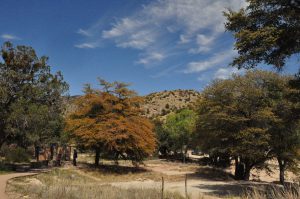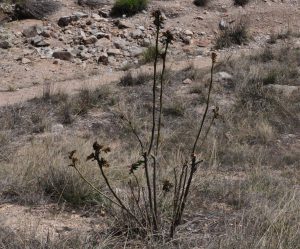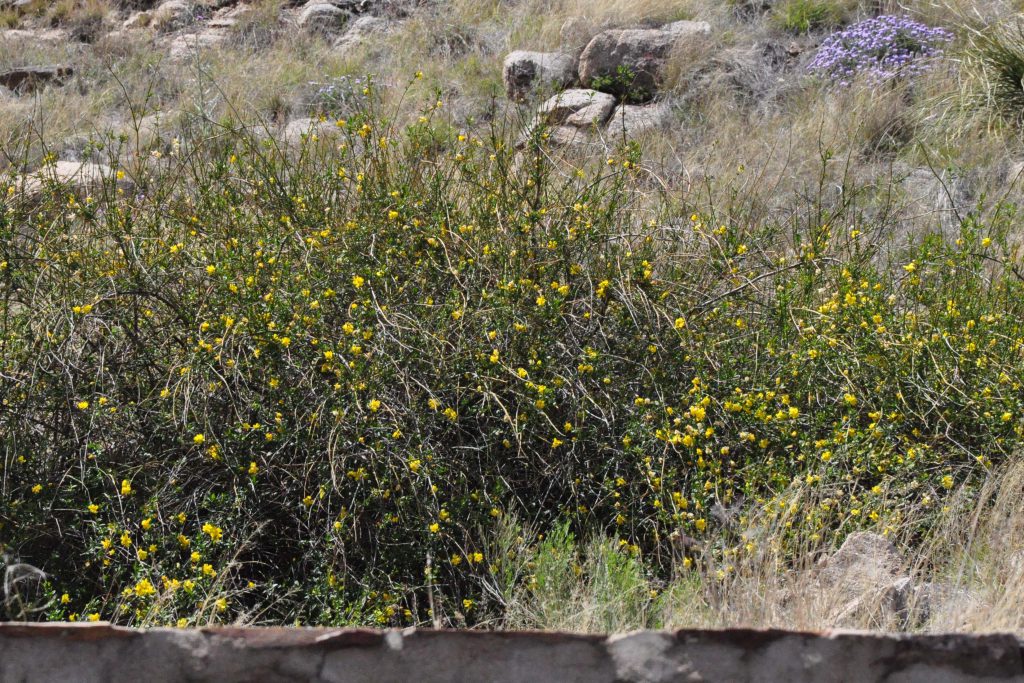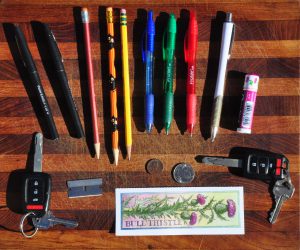We don’t walk very far these days, Ed and I. My walker is a portable park bench with wheels, a seat, and a basket under the seat where I carry binoculars, water and camera. We went to Gordon Hirabayashi, formerly known as Prison Camp. It was founded in 1937 to house prisoners who were building the highway up the Catalina Mountains. Later it served as a camp for other prisoners, many of them Japanese Americans protesting the interment of Japanese families during World War II. Gordon Hirabayashi, although staying at the camp for only 9 months, was its most famous prisoner, so much so that in 1999 they named the camp in his honor.
We followed the path noting the posters that tell the story of the camp. I found an actual park bench, at least six feet wide, where Ed and I sat and had a long and satisfying talk. It was a beautiful day, and we were sitting in the shade of an old oak tree. In the distance we could see an Emory Oak, in its “Fall” colors. These are live oaks, and a certain portion of their leaves turn brown in the spring and eventually drop off for new leaves to emerge.

We could also see how, in spite of various attempts to eradicate them, many examples of the Tree of Heaven were sprouting new leaves. The trees are the ones referred to in the title of Betty Smith’s novel, called “A Tree Grows in Brooklyn.” The novel was published in 1943, possibly when these very trees were first planted in the camp. That species of tree is from Asia, but has been grown in other places in the world because of its resilience and medicinal properties (good for digestive problems).

Across from us we could see two shrubs with beautiful yellow flowers. The plant is Japanese jasmine in the Olive family (Jasminum mesnyi). I suspect that the Warden or his wife, planted this shrub in the 1940s. If so, the plants have lasted 70 or 80 years. Since the camp buildings were razed in 1973, these plants have thrived uncared for and untended for at least 47 years.

On the way down the mountain I stopped to call my wife. She was very cheerful on the phone call, which is just as well, since in part of it she announced that she had just cut her wrists with a razor. On returning home I found how that happened. She had mislaid a knitting needle, and put her hand down the side of the easy chair to see if it was there. She found a treasure trove of lost items. Included in the unlikely collection was the offending razor (fortunately leaving a superficial cut), 2 felt-tip pens, 3 pencils, 4 ball-point pens, a chap stick, book mark, 26 cents, and two sets of my car keys which I lost years ago.

I thought I had looked everywhere for them, evidently assuming that they wouldn’t be buried in my wife’s easy chair
